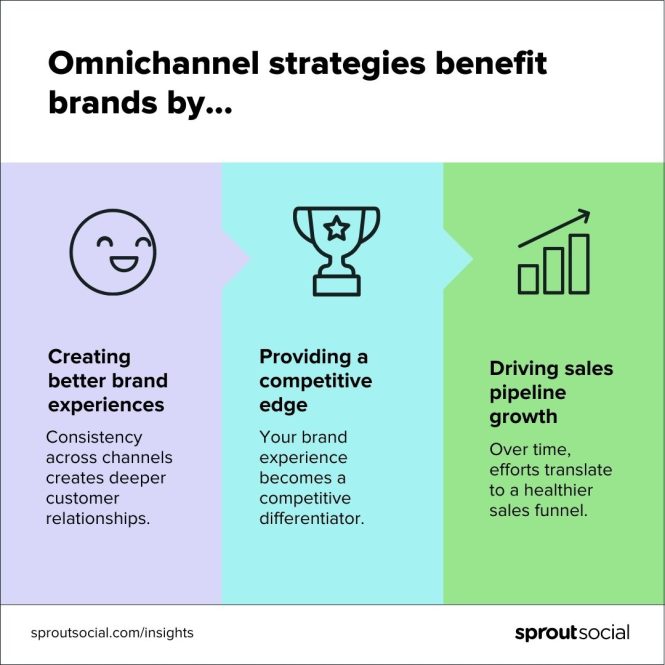

Developing omnichannel sales strategies is no longer a luxury but a necessity for businesses seeking to thrive in the modern marketplace. The digital age has blurred the lines between channels, and customers expect seamless experiences across all touchpoints. This means businesses need to offer a consistent brand message and experience, regardless of where the customer interacts with them—from their website to their mobile app to their social media presence. This article delves into the core concepts of omnichannel strategies and provides actionable steps to develop and implement them within your organization. We’ll explore the importance of customer journey mapping, the integration of sales channels, and the crucial role of data analysis in optimizing your omnichannel approach. In short, this article will detail how a cohesive, omnichannel strategy leads to better customer engagement and increased profitability.
Understanding the Omnichannel Sales Landscape
Defining Omnichannel Sales Strategies
Businesses now recognize the importance of omnichannel strategies in achieving sales objectives. Omnichannel sales strategies involve the integration of multiple sales channels to create a cohesive customer experience. These strategies are crucial for modern businesses as they provide a variety of channels for customers to engage with the brand and place orders, from online stores and mobile apps to social media. By connecting these diverse channels, brands can streamline the customer journey, enhancing customer experiences and ultimately driving sales. In this era of interconnected customers, omnichannel strategies enable brands to personalize the customer experience across various touch points, which leads to greater customer satisfaction and loyalty. This, in turn, drives business growth.
Identifying Customer Pain Points
Many businesses struggle with fragmented customer experiences. Customers often encounter inconsistencies across different touchpoints, leading to frustration and ultimately impacting sales. Customers today demand seamless and personalized experiences. They often use multiple channels to engage with a brand throughout the buying journey, from initial research to purchase and after-sales support. A lack of integration between these channels can lead to a disjointed and frustrating experience for the customer.
Creating a Seamless Customer Journey
Mapping the Customer Journey
Developing an effective omnichannel sales strategy begins with understanding the customer journey. By mapping the customer journey, businesses gain insights into how customers interact with their brand across different touchpoints, from initial awareness to purchase and beyond. Understanding how customers navigate your ecosystem allows for optimization of each touchpoint. This helps to address potential friction points, ensuring a streamlined, enjoyable journey for the customer. A solid strategy will provide clear answers as to where and how customers interact with the business and how to enhance the experience.
Integrating Sales Channels
Integrating Technology
Integrating different sales channels requires a strong technological infrastructure. Businesses must ensure that data from various channels—websites, mobile apps, social media, and call centers—are seamlessly integrated. This allows for real-time updates on customer interactions, enabling personalized experiences and accurate inventory management. Data integration should allow for a complete view of the customer across all channels, providing a 360-degree view and the ability to adapt in real-time to any customer need.
Consistent Brand Messaging
Maintaining consistent brand messaging across all channels is crucial. This ensures a unified customer experience and avoids potential confusion or inconsistencies. By ensuring every interaction carries the same tone and brand identity, businesses foster a sense of trust and familiarity with customers, driving loyalty and advocacy.
Personalizing Customer Interactions
Personalized Recommendations
Leveraging data analysis to personalize customer interactions is key to a successful omnichannel strategy. By understanding customer preferences, past interactions, and purchase history, businesses can provide tailored recommendations and offers, increasing engagement and sales. For example, an e-commerce site could suggest products based on a customer’s browsing history or past purchases. This personalized approach not only drives sales but also improves the customer experience, strengthening relationships.
Measuring and Adapting Your Strategy
Key Performance Indicators (KPIs)
Tracking key performance indicators (KPIs) is essential for measuring the effectiveness of your omnichannel strategy. Metrics such as conversion rates, customer lifetime value, and customer satisfaction scores can provide valuable insights into how well the strategy is performing and identify areas for improvement. This continuous monitoring enables adjustments and optimization, ensuring the strategy aligns with evolving customer needs and market trends.
Adaptability
Omnichannel strategies need to adapt to change. Market trends, customer preferences, and technological advancements are always evolving. Successful strategies are flexible and responsive, adapting to new technologies and opportunities to enhance the customer experience and to remain competitive in the market. This constant adaptation is what separates successful businesses from those that struggle to keep pace.
How can businesses track the success of their omnichannel strategies?
By closely monitoring key performance indicators (KPIs) and analyzing data on conversion rates, customer satisfaction scores, and customer lifetime value, businesses can gain insights into the effectiveness of their strategies. These metrics enable proactive adjustments to improve customer engagement and boost sales.
How can businesses prioritize customer experience in omnichannel strategies?
Prioritizing customer experience involves understanding customer needs and preferences across all touchpoints. Businesses must focus on seamless integration between channels, consistent brand messaging, and personalized interactions to ensure a positive experience.
What are some of the biggest challenges faced when implementing omnichannel strategies?
What are some real-world examples of effective omnichannel strategies and best practices?
How can omnichannel strategies benefit customer retention?
Personalized interactions and seamless experiences across channels contribute significantly to customer loyalty and retention. By providing a consistent brand experience and proactively addressing customer needs, businesses can foster stronger relationships. These strategies build trust and familiarity, resulting in higher customer retention rates.
In conclusion, developing robust omnichannel sales strategies is crucial for businesses aiming to thrive in today’s competitive market. By seamlessly integrating various sales channels and adapting to customer preferences, companies can enhance customer experience, boost sales, and foster lasting relationships. This article has highlighted key strategies for building an effective omnichannel approach. Now, it’s your turn to leverage these insights to craft a winning omnichannel sales strategy for your business. Don’t hesitate to experiment, track your progress, and adapt your approach as needed to achieve optimal results. Consider reaching out to a sales consultant for personalized guidance if needed.